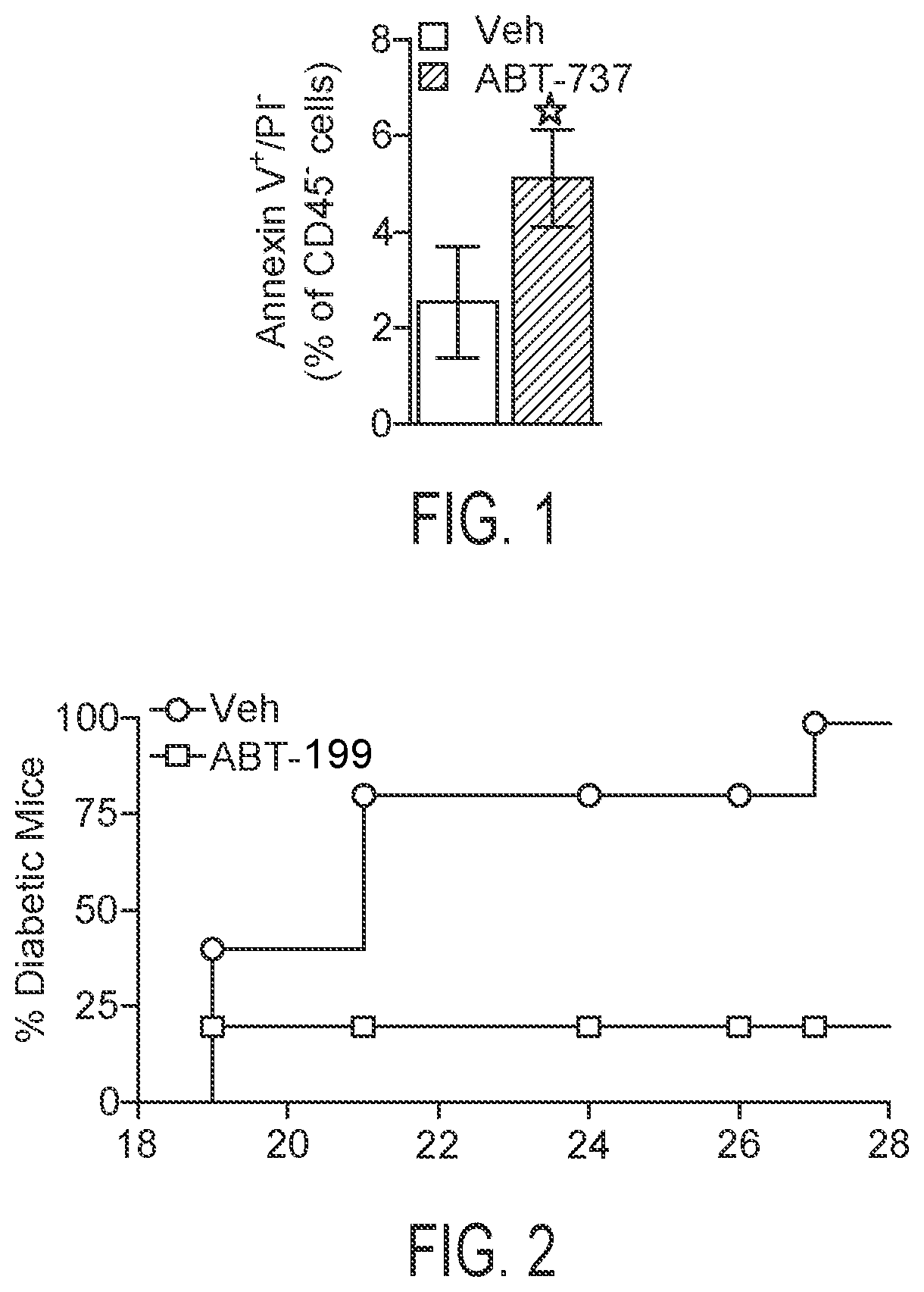Inhibiting senescent processes in beta cells for the prevention of type 1 diabetes
a technology of beta cells and senescence processes, applied in the direction of heterocyclic compound active ingredients, drug compositions, metabolic disorders, etc., can solve the problems of profound affect, affecting the function of the cells, and the risk of genetic instability and cancer, so as to prevent the onset and reduce the severity of the diseas
- Summary
- Abstract
- Description
- Claims
- Application Information
AI Technical Summary
Benefits of technology
Problems solved by technology
Method used
Image
Examples
Embodiment Construction
[0015]Inhibition of Senescent Processes. The scope of the invention encompasses methods for inhibiting various pathological senescent processes in beta cells.
[0016]In a first aspect, the scope of the invention encompasses a method of preventing Type 1 diabetes in a subject at risk therefore by the administration to the subject of a senolytic agent. In a related implementation, the invention comprises a senolytic agent for use in the prevention of Type 1 diabetes. In a related implementation, the scope of the invention encompasses the use of a senolytic agent in the manufacture of a medicament for the prevention of Type 1 diabetes.
[0017]As used herein, Type 1 diabetes refers to Diabetes mellitus, Type 1, as known in the art. This form of diabetes is caused by autoimmune destruction or impairment of beta cells, manifesting in reduced insulin production, and dysregulated glucose metabolism. As used herein, beta cell refers to pancreatic islet beta cells, as known in the art. For exampl...
PUM
| Property | Measurement | Unit |
|---|---|---|
| concentration | aaaaa | aaaaa |
| genotoxic stress | aaaaa | aaaaa |
| β-galactosidase activity | aaaaa | aaaaa |
Abstract
Description
Claims
Application Information
 Login to View More
Login to View More - R&D
- Intellectual Property
- Life Sciences
- Materials
- Tech Scout
- Unparalleled Data Quality
- Higher Quality Content
- 60% Fewer Hallucinations
Browse by: Latest US Patents, China's latest patents, Technical Efficacy Thesaurus, Application Domain, Technology Topic, Popular Technical Reports.
© 2025 PatSnap. All rights reserved.Legal|Privacy policy|Modern Slavery Act Transparency Statement|Sitemap|About US| Contact US: help@patsnap.com

